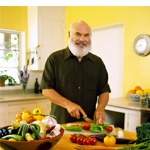Foods You Should Always Buy Organic: The Dirty Dozen

I am pleased to have an ongoing association with the Environmental Working Group (EWG), a nonprofit organization that advocates for policies that protect global and individual health. Specifically, I help EWG spread the word about one of its most valuable pieces of research – its Shopper’s Guide to Pesticides in Produce. The 2023 version is based on the results of ongoing pesticide tests performed on produce and collected by federal agencies.
Nearly all of the data used took into account how people typically wash and prepare produce – for example, apples were washed and bananas peeled before testing. The following “Dirty Dozen” had the highest pesticide load, making them the most important to buy organic versions – or to grow them organically yourself.
The Dirty Dozen (2024)
- Strawberries
- Spinach
- Kale, collard, mustard greens
- Grapes
- Peaches
- Pears
- Nectarines
- Apples
- Bell and hot peppers
- Cherries
- Blueberries
- Green Beans
- +Potatoes
Why should you care about pesticides? The EWG points out that there is a growing consensus in the scientific community that small doses of pesticides and other chemicals can have adverse effects on health, especially during vulnerable periods such as fetal development and childhood. Here’s a video in which I address the importance of avoiding pesticides.
Also keep in mind that maintaining your family’s health is not the only reason to choose organic food. Pesticide and herbicide use contaminates groundwater, ruins soil structures and promotes erosion, and may be a contributor to “colony collapse disorder,” the sudden and mysterious die-off of pollinating honeybees that threatens the American food supply. Buying or growing organic food is good for the health of the planet and for healthy aging.
At the opposite end of the contamination spectrum, check the list of Foods That You Don’t Have to Buy Organic, also known as the “Clean 15.”
Source:
ewg.org/foodnews/dirty-dozen.php
Reviewed by Benjamin S. Gonzalez, M.D., May, 2016. Updated March 2024.












